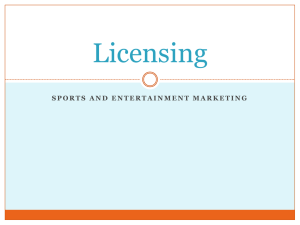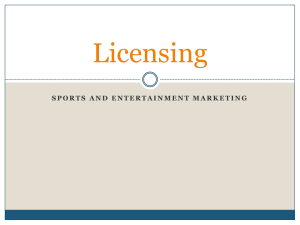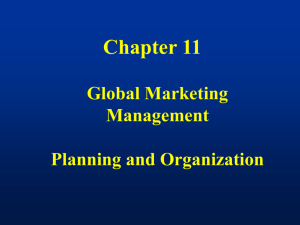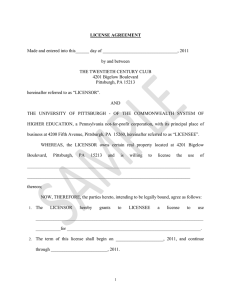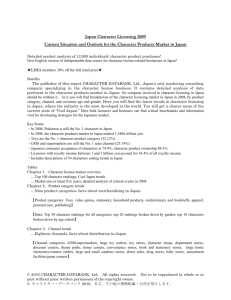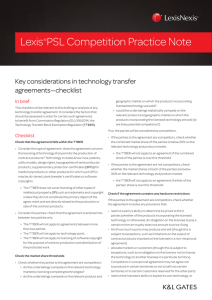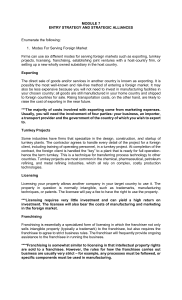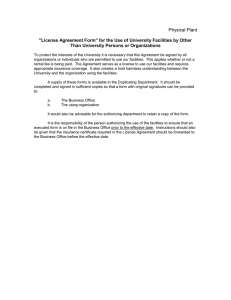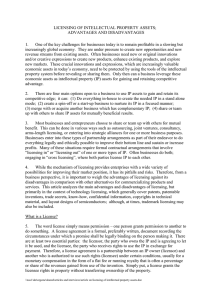Chapter 12 Licensing 12-1
advertisement
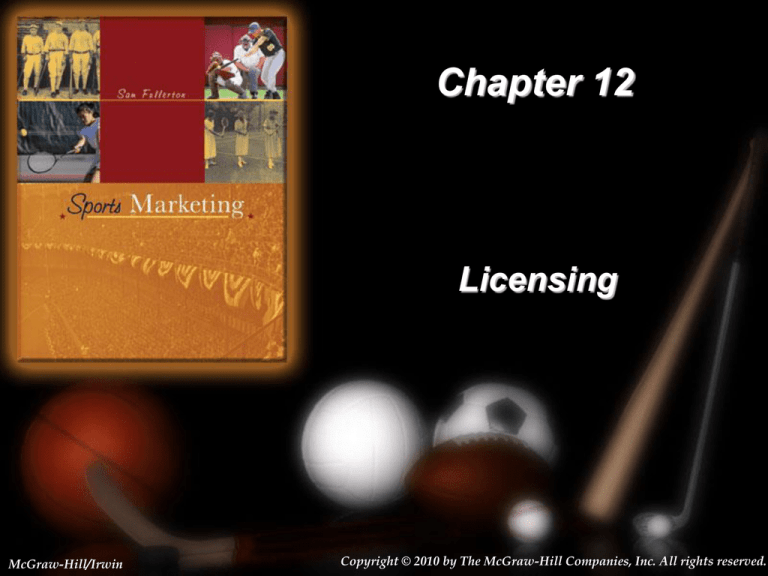
Chapter 12 Licensing McGraw-Hill/Irwin Copyright © 2010 by The McGraw-Hill Companies, Inc. All rights reserved. 12-1 Introduction to Licensing • Third Special Case of Sponsorship • Licensing is a Value-Adding Process that Provides Revenue-Generating Opportunities Via the Conveyance of the Right to Use Another Organization’s Intellectual Properties for Commercial Purposes 12-2 Intellectual Properties • Intellectual Properties – Intangible Assets for Which an Organization Can Claim Ownership • Trademarks – Registered Identifiers Which Can Be Protected Using Existing Laws • Examples: – Brand Names - Nike – Slogans – “Just Do It” – Logos – the Nike “swoosh” 12-3 Brief Historical Perspective • 1930s - Walt Disney Characters • 1950s – Television Personalities • 1960s – Professional Sports in USA • 1970s – Collegiate Sports in USA 12-4 Key Concepts - Participants • Licensor – Owner of the Intellectual Property Who Conveys the Right to Use Select Intellectual Properties to the Licensee • Licensee – Entity that Is Given Permission to Use the Intellectual Properties for Specified Marketing Activities 12-5 Financial Perspective (2006) • Sales of Officially Licensed Merchandise Were Estimated at $187.4 Billion • These Sales Resulted in Total Payments of Some $10 Billion to the Licensors • Payments to the Licensors Generally Involve a Percentage of the Licensee’s Sales Revenue - Royalties 12-6 Top 5 Licensing Categories • • • • • • Categories Royalties Characters from Entertainment $2,680 Trademarks/Brands 1,090 Fashion 830 Sports 825 Collegiate 203 – 2006 Royalties in Millions – US Dollars 12-7 Establishing and Maintaining Ownership • Drop in Box 12.1 Here 12-8 Agreement Terms • Eligible Products • Scope of Exclusivity • Geographic Scope 12-9 Eligible Products • Product Item – One Specific Product – i.e. – Rival brand crock pots • Product Line – i.e. – Rival brand food preparation items • Product Assortment – i.e. – All products produced by Rival 12-10 Scope of Exclusivity • Exclusive – Rights for Specific Product(s) Granted to a Single Licensee • Nonexclusive – Granting Rights to Use Intellectual Properties on Same Product(s) to Two or More Competing Companies 12-11 Geographic Scope • Regional – Small local region – Larger region but not national in scope – National – Multinational region • Global 12-12 Example of Actual Agreement • Drop in Box 12.2 Here 12-13 Compensation • Fixed Fee • Royalty • Minimum Guarantee http://www.clc.com/clcweb/publishing.nsf/Content/institutions.html 12-14 Compliance Reviews • “Underpayments May Represent as Much as 50% of the Amount Due to the Licensor” • Verify that All Payments Due to the Licensor Have Been Made • Should be Performed Periodically 12-15 Benefits for the Licensor (Owner) • Revenue Stream • No Significant Investment Required • Broader Product Assortment for Consumer 12-16 More Benefits for the Licensor • Create Consumer Awareness & Interest • Control Standards of Quality • Control Array of Products Available • Protect Image 12-17 Benefits for the Licensee (User) • Capitalize on Licensor’s Brand Equity • Capitalize on Short-Term Phenomena • Capitalize on Economies of Scale • Reach New (Higher) Price Points 12-18 Example of Selection Criteria • Drop in Box 12.4 Here 12-19 Infringement • Unauthorized Use of an Organization’s Trademarks and Logos • Counterfeit Issues – Lost Revenues – Lower Quality 12-20 Market Surveillance • Policing the Marketplace in an Effort to: – Locate counterfeit merchandise; – Locate other trademark infringements; – Take appropriate measures to end the infringement; – Remove any illegal products, and – Discourage such efforts in the future 12-21 Remedies for Infringement • Legal Restraints (Cease-and-Desist) • Confiscate and Destroy Counterfeits • Possible Time in Jail for Offenders 12-22 Performance Review • Evaluate Licensee’s Financial Performance • Evaluate Licensee’s Production and Marketing 12-23 Developing Licensing Plan • • • • • • • Identify Licensable Intellectual Properties Establish Fee Structure Establish Selection Criteria Establish (Type) Terms of Agreement Engage in Compliance Review Market Surveillance Performance Review 12-24 Examples of Licensing Contracts • Drop in Table 12.3 Here 12-25 Growth Strategies • New Target Markets • New Up-Market Products • More Traditional Advertising (Leveraging) 12-26 Top American Universities • Drop in Box 12.8 Here 12-27 Closing Capsule • Licensing Is a Special Case of Sponsorship that Features a Win-Win Relationship for the Licensor and the Licensee • Global Sales of Licensed Products Continue Steady Growth 12-28 Closing Capsule • Major Infringement Issues in Many Countries across the World • Manufacturers and Retailers Are Being Encouraged to Produce and Sell Officially Licensed Merchandise 12-29 Closing Capsule • Insert Figure 12.3 Here 12-30
